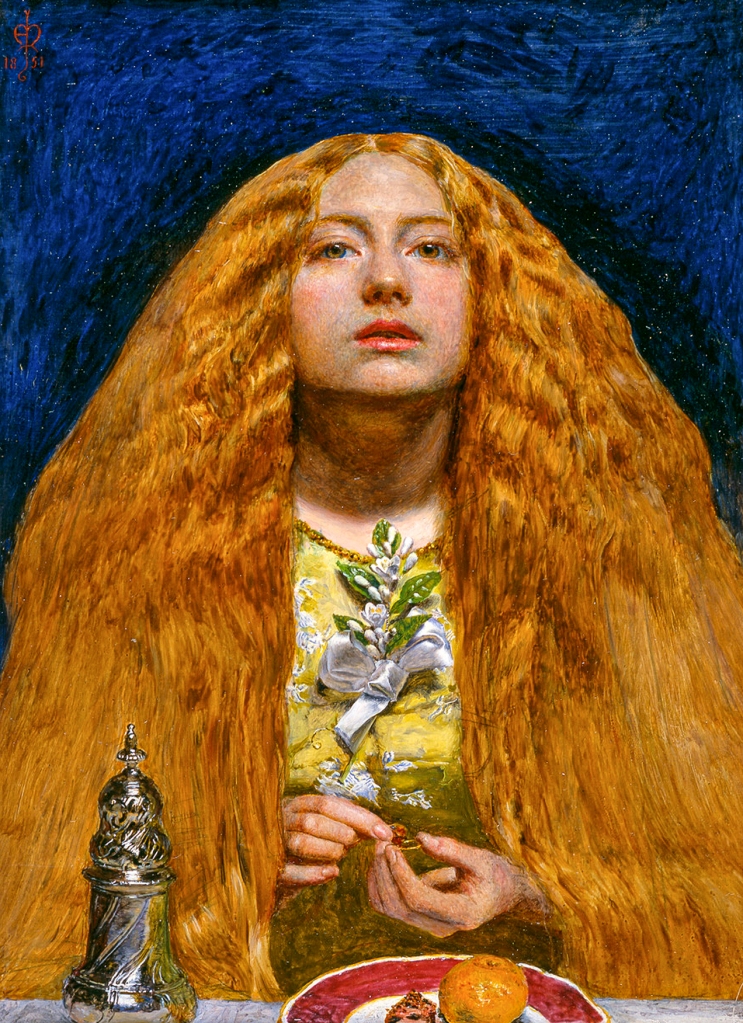
Painted in 1851, ‘The Bridesmaid’ illustrates one of many Victorian marriage traditions. Victorians believed a bridesmaid would see a vision of her true love if she passed a piece of wedding cake through a ring nine times, a ritual depicted in Millais’ painting. This is not the only symbolism found in the painting. An orange blossom on the woman’s chest represents chastity.
There is also a hint of fear in the woman’s face, giving the sense that the bridesmaid is thinking about her future. More recent students of Millais’ paintings point to hidden sexual images, and in ‘The Bridesmaid’ a phallic-shaped sugar caster may represent the woman’s future lover. The object disrupts the piece’s symmetrical composition, drawing the viewer’s attention to it.
The art historian Tim Barringer writes of Millais’s The Bridesmaid:
‘While the orange blossom pinned to her chest is a symbol of chastity, the woman is contemplating with fear and fascination future sexual consummation. This is hinted at by the phallic shape of the sugar caster, disrupting the work’s symmetrical composition, a symbol (though presumably not a conscious one on Millais’s part) of the man whom she is hoping to visualise.’
Source